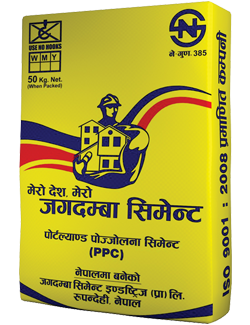Difference Between OPC and PPC Cement
OPC vs PPC
Construction materials in our world have come a long way. From the wood and rock structures millennia ago, we now have superstructures that reach to the sky. Much of this is thanks to the development of technology, particularly in the production of concrete which is based on cement. Ordinary Portland Cement (OPC) is the most common and popularly used cement in the world, but another option which is Portland Pozzolana Cement has also risen to prominence in recent times.
 VS
VS 
OPC is the acronym commonly used in reference to Portland Cement (or Ordinary Portland Cement, which explains the “O” in the acronym). It is the most common cement type used worldwide. OPC is the basic component used for concrete, mortars, stucco, and other common construction essentials that require cement in the mixture. It is designated as a type of hydraulic cement, which means that it is a type of cement that doesn’t only harden as a reaction to being mixed with water, but also becomes water-resistant once it cures. It is produced through pulverizing Portland cement clinkers, which consists of hydraulic calcium silicates, producing a fine powder. The Portland cement clinkers are initially created through heating a mixture of raw materials, the most important being limestone. Secondary materials include a source of aluminosilicate (often clay, but could also be impure limestone). Other common secondary materials are shale, sand, iron ore, bauxite, fly ash, and slag. These are then heated at around 1450 °C, which is the standard temperature used for producing most cements in this day and age. When water is mixed with OPC, it takes some hours to settle and gradually hardens and increases in durability. This process can vary depending on what the mixture is and what the desired result is.
Ordinary Portland Cement is the most prevalent because of the readily available raw materials in the area where it is produced. This is also why OPC is an ideal option for cement needs throughout the world today as the costs of producing it is very low without compromising quality. Being a low-cost cement product leads to OPC being widely used in the production of concrete, which is the most popular material used for construction in the world for roads, houses, buildings, dams, and the like. OPC is also used for mortars and in making grouts.
In relation to this, PPC refers to a form of Portland Cement which is Portland Pozzolana Cement. PPC is produced when pozzuolans are used in the mixture. A pozzuolana is a cement extender improving the strength and durability of the cement or even reducing the costs of producing concrete. The term came from the root word “pozzuolana” which is a form of volcanic ash. The introduction of pozzuolana into a hydraulic cement like OPC, or any similar material, leads to a pozzuolanic reaction. This, in turn, leads to a cementitious material that uses less cement but has the same or even greater material durability than without this addition. A pozzuolanic material by itself has few, if any, cementitious properties by itself, but adding it into a cement mixture will result in the above-mentioned results (provided the cement has a greater volume in relation to the pozzuolanic material added). PPC may take a longer time to settle than OPC, but it will eventually produce similar results given time. Though volcanic ash is the first form of pozzuolana used, this now includes natural and artificial siliceous or siliceous, aluminous materials such as clay, slag, silica fume, fly ash, and shale. Note that some of these are effectively “waste” materials from other processes but are ideal to produce PPC. With the production of PPC, the use of overall OPC is greatly reduced in the mixture (by close to 50 per cent) to produce the same results.
Knowing about the differences and the relationship between OPC and PPC is certainly useful, particularly for those in the construction industry. Determining which of the two is best suited for the needs and costs of a project can be very important in ensuring a successful endeavor.
Summary:
- Ordinary Portland Cement (OPC) is the most common cement used in the world because of the abundance and low cost to produce it.
- Portland Pozzolana Cement (PPC) is a variation of OPC which includes a mixture of a pozzuolanic material which can increase the strength of the concrete and reduce the amount of OPC used.
- OPC is produced simply by grinding to a powder limestone and secondary materials; PPC is the result of adding pozzuolan or similar materials such as volcanic ash, clay, slag, silica, fume, fly ash, or shale with OPC.
- PPC can greatly reduce the amount of OPC used in concrete.